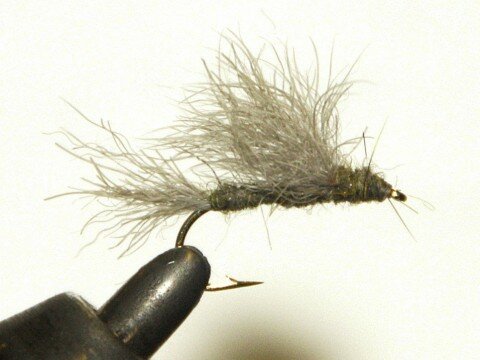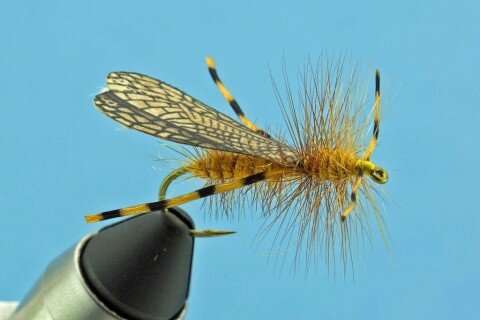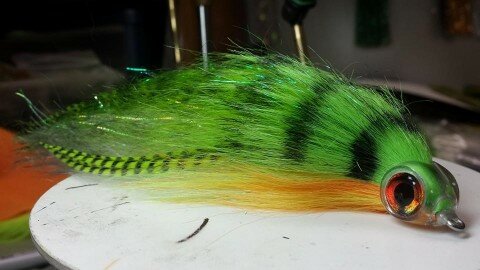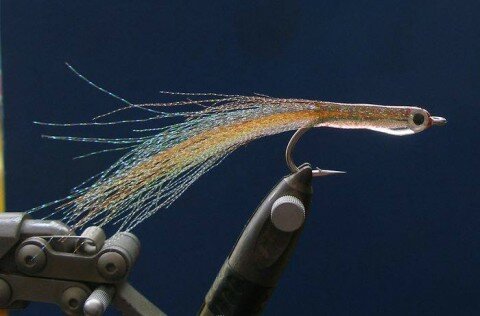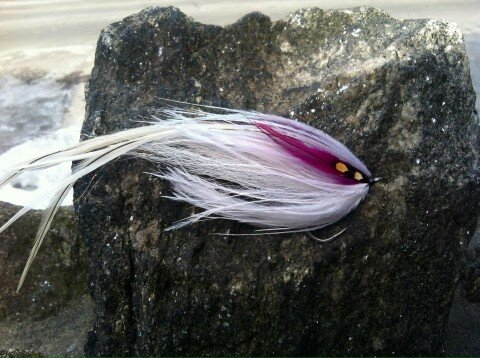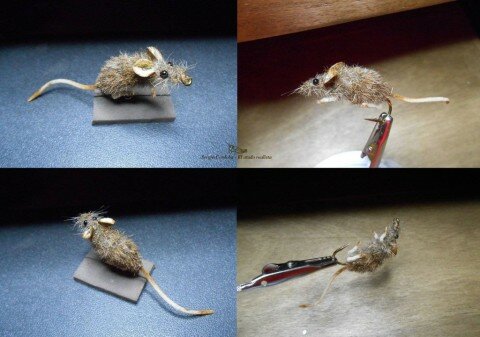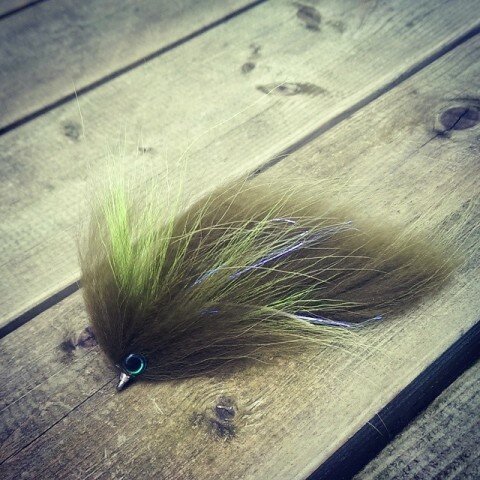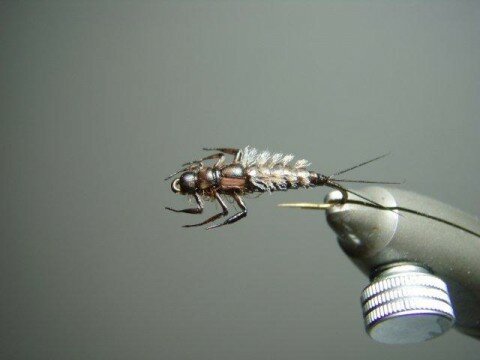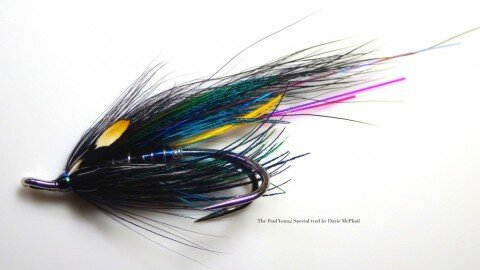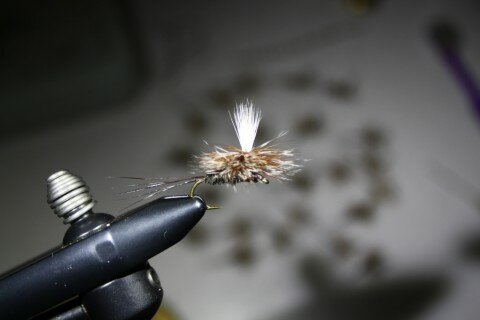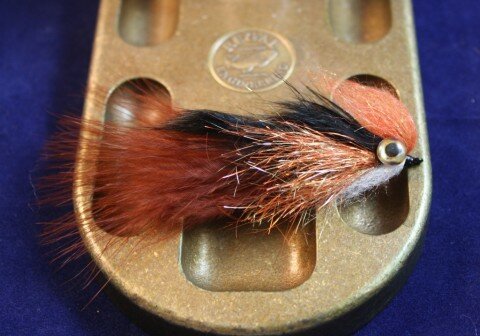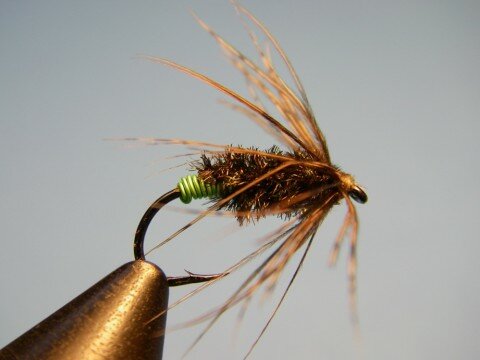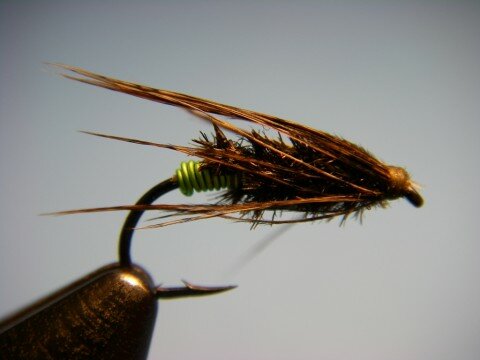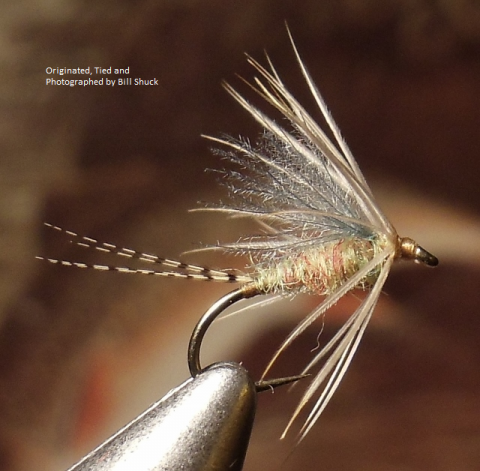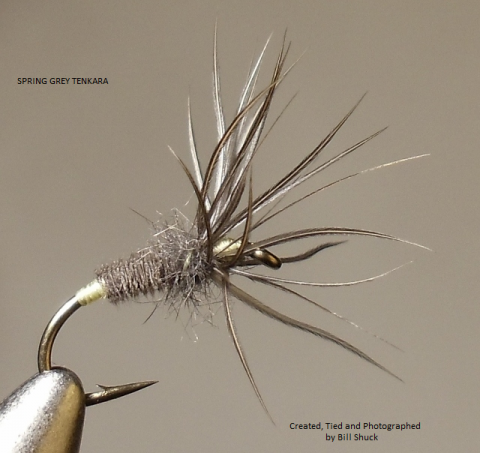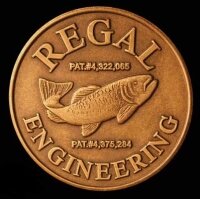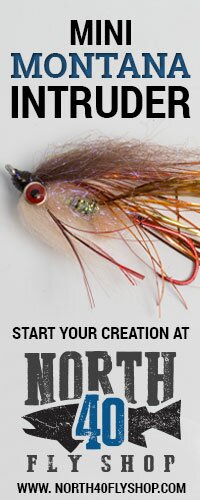Nice video here of Massimo Gianneschi tying a Stone Fly. Published by Confluenze Magazine.
Category Archives: Trout flies
Barr’s Graphic Caddis
Hammer Creek Fly Fishing tackles John Barr’s Graphic Caddis. John created this pattern to imitate an emerging caddis pupae.
Filed under nymphs, Trout flies
Parachute Adams Dry Fly
Hans Stephenson shows us how tie a Parachute Adams dry fly. Note from Hans: This pattern is indispensable – tie it in sizes 12-22 and you can match just about any hatch.
Filed under Trout flies
Dust Bunny
Gates Au Sable Lodge had the recipe for this ugly little fly. Josh Greenberg mentions this particular pattern in his new book, Rivers of Sand. This book is a fantastic fly fishing read! I recommend you pick one up especially if you are into fly fishing for trout. Josh gives a brief explanation of the fly below. There is a step-by-step provided at the Gates Au Sable Lodge website.
Perhaps the ugliest fly that we sell at the lodge. While simple, it’s not as easy to tie well as it seems. This fly works so well in June it seems like you should buy it next to the salmon eggs and Berkeley Powerbait in your local bait shop. Put a shot of gel on it and go fishing. After you catch a fish, or the fly gets drowned, use the powder floatant to reinvigorate it. Fish alone or in tandem. To rising fish, or as a searching pattern. Definitely the most effective Iso emerger I’ve ever fished.
Hook: #12 Daiichi 1180
Thread: Gray or Olive Monocord
Tail: Dun Rabbit Foot
Body: SLF and beaver dubbing (Brown Olive SLF, Gray SLF, Light Gray Beaver)…use a coffee grinder
Wing: Dun Rabbit Foot
Filed under Trout flies
CJ’s Freaky Frog – Chad Johnson
Chad shows you how to tie a really cool pattern of his.
Filed under Foam, Largemouth, Smallmouth, Trout flies
Flies Around the Net – 6-17-2014
It’s been awhile since I’ve posted Flies Around the Net, so I wanted to jump back into it this month. I also want to thank all of you for visiting and reading FrankenFly! I hope you enjoy these!
Filed under Streamers, Trout flies
Goober Midge – Kelly Galloup
To find more check out Kelly Galloup’s Slide Inn.
Filed under Trout flies
Green Butt Soft Hackle Diving Caddis
Ted Kraimer of Current Works had this nice soft hackle pattern in his enewsletter today. The pattern imitates an adult female caddis. Ted explains more below.
Black caddis are found in northern Michigan rivers anytime from late April through mid-July and can present themselves either heavily or lightly any day in between. It seems that as the season progresses, these “Mother’s Day caddis” or Grannom caddis tend to be heavier in density right at dusk and even into dark.
The adults bounce around on the water’s surface and don’t get much attention from fish because of their erratic nature of flight and the amount of wasted energy that sometimes goes into chasing them. But of importance are the adult female caddis with their bright green egg sack that oviposit/lay eggs by diving under water. These are the same caddis you may have witnessed crawling on vegetation or even your waders on a recent fishing trip – I often find them on my drift boat’s oar blades.
This easy and quick to tie pattern is effective for fishing wet any time the hatch is present, and even at times a day or two after a heavy emergence has occurred. The bright wire imitates the egg sack while providing some weight. Meanwhile, the soft hackle undulates under the water imitating the wing and antennae of the diving caddis.
To read how to fish this pattern and to see a step-by-step of how to tie the pattern, head over to the Current Works website here.
Filed under Soft Hackles, Trout flies
Just-Emerged PMD and Spring Grey Tenkara – Bill Shuck
I love Bill Shuck’s flies, so I asked if he would send me a couple more to show off here at FrankenFly. So here they are. Bill briefly explains each below. Thanks Bill!
This one I call “Just-Emerged PMD” that I originally tied for an IBF swap in 2013. It is basically a soft hackle with a “wing” of CDC, whose purpose is to trap just enough air to give the impression of an insect in the final stage of becoming an adult.
Hook: Daiichi 1550, Size #14
Thread: Griffith’s Sheer 14/0, amber
Hackle: Light ginger dun hen saddle
Tail: Lemon wood duck
Body: Blend of light yellow/red/blue wool yarn fibers, twist dubbed
Wing: Greenish-blue CDC
The second is a version of a kebari-style tenkara fly. Tenkara fishing , which dates back for centuries in Japan, has become moderately popular in the USA over the past few years. It employs minimalist equipment (rods with no reels) and was developed to catch relatively small fish out of high mountain streams. The distinguishing feature of the kebari fly is the “reversed” hackle, an arrangement which promotes a life-like pulsing of the hackle fibers in turbulent water.
Hook: Daiichi 1150, Size #12
Thread: Pearsall’s Gossamer silk, #3 primrose
Head: Buildup of thread wraps
Hackle: Waterhen covert
Tag: Thread wraps
Abdomen: Grey goose herl
Thorax: Muskrat fur in dropped loop brush
Filed under Trout flies
Waste Troll Leech – Philip Rowley
This is one of Phil’s favorite leech patterns and he says it is an evolution of sorts of his Aftershaft Leech featured in his first book, Fly Patterns for Stillwaters. With the advent of Marc Petitjean’s Magic Tool he can now blend other materials together for his leech patterns. Phil mentions that the body technique for this fly also works well for dragon nymphs and thoraxes on caddis pupa patterns. Be prepared for takes on the drop with this pattern.
Filed under Trout flies

